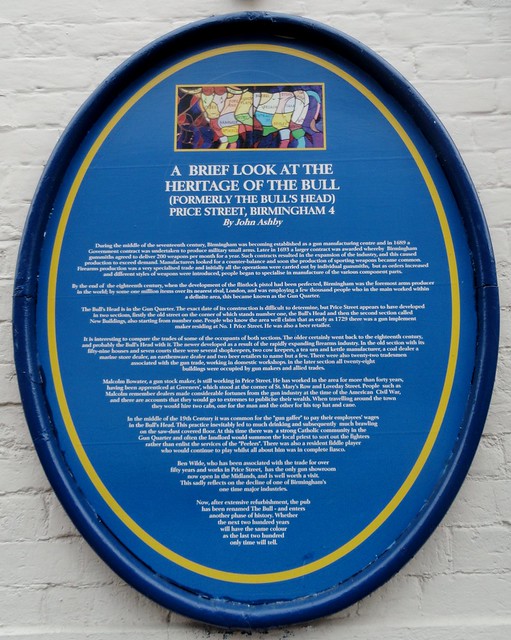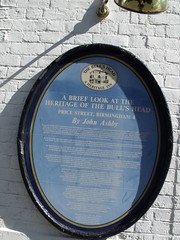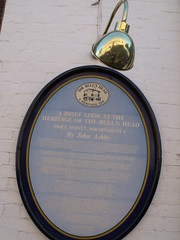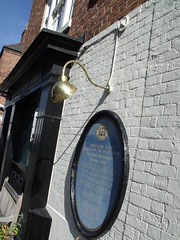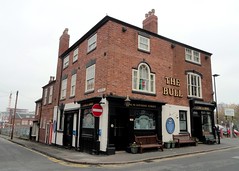A brief look at the heritage of The Bull (formerly The Bull's Head) Price Street, Birmingham 4 By John Ashby During the middle of the seventeenth century, Birmingham was becoming established as a gun manufacturing centre and in 1689 a government contract was undertaken to produce military small arms. Later in 1693 a larger contract was awarded whereby Birmingham gunsmiths agreed to supply 200 weapons a month for a year. Such contracts resulted in the expansion of the industry, and this caused production to exceed demand. Manufacturers looked for a counter-balance and soon the production of sporting weapons became common. Firearms production was a very specialised trade and initially all the operations were carried out by individual gunsmiths, but as orders increased and different styles of weapons were introduced, people began to specialise in manufacture of the various component parts. By the end of the eighteenth century, when the development of the flintlock pistol had been perfected, Birmingham was the foremost arms producer in the world; by some one million items over its nearest rival London, and was employing a few thousand people who in the main worked in a definite area, this became known as the Gun Quarter. The Bull's Head is in the Gun Quarter. The exact date of its construction is difficult to determine but Price Street appears to have developed in two sections. Firstly the old street on the corner of which stands number one, the Bull's Head and then the second section called new Buildings, also starting from number one. People who now the area well claim that as early as 1729 there was a gun implement maker residing at No. 1 Price Street. He was also a beer retailer. It is interesting to compare the trades of some of the occupants of both sections. The older certainly went back to the eighteenth century, and probably the Bull’s Head with it. The newer developed as a result of the rapidly expanding firearms industry. In the old section with its fifty-nine houses and seven courts there were several shopkeepers, two cow keepers, a tea urn and coal dealer, a marine store dealer, an earthenware dealer and two beer retailers , to name but a few. There were also twenty-two tradesmen associated with the gun trade working in domestic workshops. In the later section all twenty-eight buildings were occupied by gun makers and allied trades. Malcolm Bowater, a gun stock maker, is still working in Price Street. He has worked in the area for more than forty years, having been apprenticed at Greener’s, which stood at the corner of St. Mary’s Row and Loveday Street. People such as Malcolm remember dealers made considerable fortunes from the gun industry at the time of the American Civil War, and there are accounts that they would go to extremes to publicise their wealth. When travelling around the town they would hire two cabs, one for the man and the other for his top hat and cane, In the middle of the 19th century it was common for the “gun gaffer” to pay their employee’s wages in the Bull’s Head. This practice inevitable led to much drinking and subsequently much brawling on the saw-dust covered floor. At this time there was a strong catholic community in the Gun Quarter and often the landlord would summon for the local priest to sort out the fighters rather than enlist the services of the “Peelers”. There was also a resident fiddle player who would continue to play whilst all about him was in complete fiasco. Ben Wilde who has been associated with the trade for over fifty years and works in Price Street , has the only gun showroom now open in the Midlands, and is well worth a visit. This sadly reflects on the decline of one of Birmingham’s one time major industries. Now, after extensive refurbishment, the pub has been renames The Bull - and enters another place in history. Whether the next two hundred years will have the same colour as the last two hundred only time will tell.
Colour: blue
Wikimedia:
Flickr:

